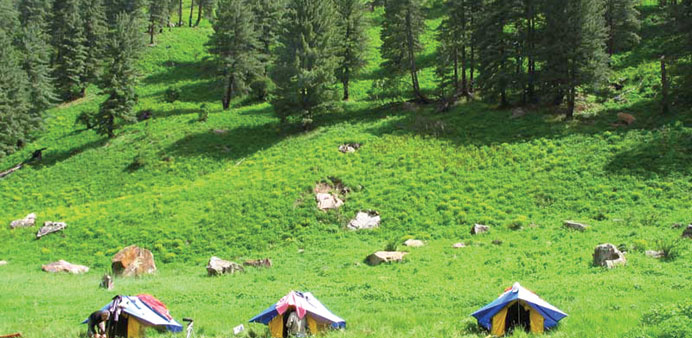|
The 38th session of the World Heritage Committee (WHC) in Doha inscribed properties from the Russian Federation, Costa Rica, Vietnam, India, the Philippines and Denmark on the World Heritage List yesterday. |
It also approved the extensions of a site in China and two transboundary sites in Poland and Belarus, and Denmark and Germany. These are two cultural sites, a mixed natural and cultural property and six natural sites. With these additions, the total number of sites on the World Heritage List has become 1,010.
The 38th session of the WHC, chaired by HE Sheikha Mayassa bint Hamad bin Khalifa al-Thani, will conclude tomorrow. The meeting will also announce the venue for the 39th session of the WHC.
Bolgar Historical and Archaeological Complex in Russian Federation lies on the shores of the Volga river, south of its confluence with the river Kama, and south of the capital of Tatarstan, Kazan. It contains evidence of the medieval city of Bolgar, an early settlement of the civilisation of Volga-Bolgars, which existed between the 7th and 15th centuries, and was the first capital of the Golden Horde in the 13th century.
Precolumbian Chiefdom Settlements with Stone Spheres of the Diquis in Costa Rica include four archaeological sites located in the Diquis Delta in southern Costa Rica, which are considered unique examples of the complex social, economic and political systems of the 500-1500 AD period. They contain artificial mounds, paved areas, burial sites and a collection of stone spheres, between 0.7m and 2.57m in diameter, whose meaning, use and production remain largely a mystery.
Trang An Scenic Landscape Complex in Vietnam is inscribed as a mixed natural and cultural property. Situated on the southern shore of the Red river delta, Trang An is a spectacular landscape of limestone karst peaks permeated with valleys, some of which are submerged, and surrounded by steep, almost vertical cliffs. Exploration of some of the highest altitude caves that are dotted across the landscape has revealed archaeological traces of human activity dating back almost 30,000 years.
Great Himalayan National Park is located in the western part of the Himalayan mountains in the northern Indian state of Himachal Pradesh and is characterised by high alpine peaks, alpine meadows and riverine forests. The property includes the upper mountain glacial and snow melt water source origins of several rivers, and the catchments of water supplies that are vital to millions of downstream users.
It protects the monsoon-affected forests and alpine meadows of the Himalayan front ranges. It is part of the Himalaya biodiversity hotspot and includes 25 forest types along with a rich assemblage of fauna species, several of which are threatened.
Mount Hamiguitan Range Wildlife Sanctuary in the Philippines forms a north-south running mountain ridge along the Pujada Peninsula in the southeastern part of the Eastern Mindanao Biodiversity Corridor. The Mount Hamiguitan Range Wildlife Sanctuary has an elevation range of 75-1,637m above sea level, and provides critical habitat for a range of plant and animal species.
Stevns Klint, Denmark, comprises a 15km-long fossil-rich coastal cliff, offering exceptional evidence of the impact of the Chicxulub meteorite that crashed into the planet at the end of the Cretaceous, about 65mn years ago. Researchers think that this caused the most remarkable mass extinction ever, responsible for the disappearance of over 50% of all life on earth. The site harbours a record of the cloud of ash formed by the impact of the meteorite.
South China Karst, China, is an extension of the South China Karst site. The property was inscribed on the World Heritage List in 2007 and is one of the world’s most spectacular examples of humid tropical to subtropical karst landscapes. The extension covers an area of almost 50,000 hectares.
Bialowieza Forest, Belarus/Poland, is an extension of and a new proposal for the Belovezhskaya Pushcha/Bialowieza transboundary site on the border between Poland and Belarus, inscribed on the World Heritage List in 1979.
Situated on the watershed of the Baltic Sea and Black Sea, this immense range of primary forest includes both conifers and broadleaved trees. The modification to the property translates as a reduction of over 5,000 hectares on the Belarus side and a vast extension of the Polish section, from 5,069 to 59,576 hectares.
The Wadden Sea, Germany/Denmark, is an extension of the Dutch and German Wadden Sea site, inscribed on the World Heritage List in 2009. The Wadden Sea is the largest unbroken system of intertidal sand and mud flats in the world. The complete extension now covers most of the Danish Wadden Sea maritime conservation area as well as a maritime extension of the Dutch Wadden Sea Conservation Area and the German Wadden Sea National Parks of Lower Saxony and Schleswig-Holstein.



